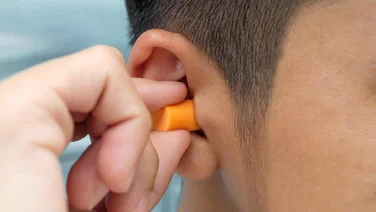To help us provide you with free impartial advice, we may earn a commission if you buy through links on our site. Learn more

Dark mornings, dark evenings, it’s no wonder that many people struggle in the winter months, especially with the dingy British weather. If your mood is altered by the winter season, you could be suffering from SAD – seasonal affective disorder. SAD is a type of depression that comes and goes in a seasonal pattern and some people find owning a SAD lamp can help to considerably improve their mood.
The National Institute for Health and Care Excellence (NICE) recommends that SAD should be treated the same way as any other sort of depression, with therapies, antidepressants and a healthy lifestyle all being options to try. However, with SAD lamps being widely touted as another alternative option, it’s important to look at what they actually are and if they do indeed help with SAD.
I spoke to several experts in the medical field to find out more.
What are SAD lamps and how do they work?
SAD lamps, also known as light therapy or phototherapy lamps, are very bright lights that people sit in front of, usually for around 30 minutes to an hour each morning. They come in a variety of designs, including tablets, desk lights, wall-mounted lights and miniature versions, to name but a few. Many wake up lights also function as SAD lamps, allowing you to combine a gentle alarm system with light therapy.
Carolina Goncalves, Superintendent Pharmacist at Pharmica, explains more on how SAD lamps work: “A SAD lamp mimics natural sunlight by delivering a certain brightness of artificial light in a certain hue. The concentrated dose of bright, artificial light stimulates specialised receptors in the eyes, which then send signals to a part of the brain called the suprachiasmatic nucleus. This mechanism helps regulate the body’s circadian rhythms and can suppress the production of melatonin, a hormone essential for sleep regulation. It also influences serotonin levels, which play a role in mood and overall well-being.”
Daniella Marchetti, PhD, DBSM Forbes Vetted and RISE CBT-I clinician at Rise Science expands on this: “Some parts of the country receive less light during certain times of the year, like winter, which can result in people producing less melatonin and serotonin hormones. These hormones help regulate sleep, mood and appetite, which can lead to feeling more depressed or going to bed later. By stimulating the brain with the high intensity light in a SAD lamp, these important hormones are better regulated and mood and sleep disturbances can be alleviated. People tend to see results between a few days to a few weeks, depending on the severity of their symptoms.”
“The suprachiasmatic nucleus in the hypothalamus is known as the ‘pacemaker’ or the ‘master clock’ of the body that regulates circadian rhythm. When you shine a bright light into the retina, it connects to the hypothalamus and sends the signal that it’s daytime, so you feel alert and awake. While this has a direct impact on your circadian rhythm, it also improves mood by helping you feel more energised and upbeat throughout the day.”
What is the science behind SAD lamps and can they be prescribed?
As with any treatment to help lift the mood, what works for one won’t necessarily work for others. However, the link between sunlight and mood has been well studied. Vitamin D is produced when your body is exposed to sunlight and scientists believe there is a link between depression and low vitamin D levels. So, a light that mimics sunlight can certainly be beneficial to many people.
Carolina Goncalves explains further, “Many people have found that using a light therapy lamp, especially first thing in the morning, can help lift their mood and boost energy levels. Clinical studies have shown that light therapy can significantly reduce symptoms of SAD, with many individuals experiencing noticeable benefits within about a week. However, while light therapy is effective for many, its success rate varies and it may not work for everyone. That said, SAD lamps do not necessarily ‘cure’ SAD or prevent future episodes. The NHS does not currently list light therapy as a primary treatment due to limited large-scale evidence, though many individuals find it beneficial in managing their symptoms.”
While not necessary, Carolina also recommends speaking with a medical professional before purchasing a SAD lamp. “It can be beneficial to consult a medical professional to ensure it is appropriate for your specific needs. While there is no universal certification for SAD lamps, choosing one that has been tested for medical use and is free from harmful UV radiation is advisable.”
Can I use a SAD lamp all day?
“For SAD lamps to be effective, they should provide an exposure of 10,000 lux of light,” says Daniella Marchetti. “It is recommended to use the lamp within the first hour of waking in the morning for thirty minutes to an hour. I often tell my patients that direct sunlight is preferable, but when the weather or your schedule does not permit, the lamp is a great alternative because it can be done while working on the computer, reading or watching TV, with the lamp about a foot away from the face.”
Lux is the unit that measures light intensity, with brighter light being shown to have a more significant impact on mood and energy levels. However, the brighter the light, the shorter the amount of time you’ll need to use a SAD lamp for and they should certainly not be used all day. Carolina Goncalves also points out that “it is advisable not to use the lamp too late in the day, as this can interfere with sleep.”
Are there any side effects associated with SAD lamp usage?
“SAD lamps are generally safe and well-tolerated, with side effects being uncommon,” says Carolina Goncalves. “However, some people may experience mild, short-lived effects such as agitation, irritability, headaches, eye strain, nausea or temporary blurred vision. These issues are more likely to occur if you sit too close to the lamp, use it for too long or have a condition that increases sensitivity to light. Most SAD lamps are equipped with UV filters to prevent exposure to harmful ultraviolet rays. If you have an eye condition, are taking medication that increases light sensitivity or experience persistent side effects, consult your GP.”
Similarly, Daniella Marchetti points out that “the bright light may trigger headaches in some people who contend with chronic migraines, which is why it is important to use them under the guidance of a medical professional. People with sleep issues also tend to have chronic pain and headaches, so my patients often need to build a tolerance for their SAD lamps over time. People with a diagnosis of bipolar or diabetes should also proceed with caution, as the bright light can trigger manic or hypomanic episodes or cause damage to the retina in those with eye diseases.”
Should you buy a SAD lamp?
Used correctly, SAD lamps can have many benefits for those who suffer with SAD. But, of course, they’re not a magic ‘cure-all’ and care should still be taken around their use. But for many people who struggle during the winter months, a SAD lamp can make getting through the day just that little bit easier.
For more information, buying advice alongside a list of recommendations, remember to check our best SAD lamps roundup.





